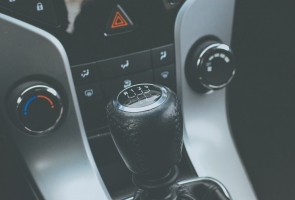So, you have — or you’re thinking about starting — an auto parts e-comm. Let me start out by saying I admire your gumption. There is a lot of competition out there and many much larger competitors.
The good news is that the current crisis is making it easier for more online retailers to gain a larger market share, mostly because more people are opting to buy online than ever before. That’s true of everything from groceries to pet supplies to actual pets. Automotive is no exception. There is a huge market for your store to tap. You just need to get in front of it. To get in front of it, you need a good content strategy.
Today, I’m going to make some valuable recommendations that will help start you out right or steer your store into a more profitable direction. I’m also going to provide some sound advice on putting all together. Keep reading until the end and you’ll have the framework for a sustainable success strategy for consistently delivering good automotive e-commerce content.
#1: Select the Best E-Comm Platform
All e-comm platforms are not created equal. Research all your options and select an e-comm platform that is likely to get results. How products are listed, whether you intend to drop-ship, how people will find your store — all of these are important considerations.
For some stores, platforms like Shopify work best. For others, having affiliations with platforms like Amazon and eBay would be better options. Low-end, low-cost products tend to sell much better on platforms like eBay, while specialty parts, imports, or custom parts would likely do better on a platform that provides more flexibility with product presentation.
Regardless of the platform, good product descriptions are a must. Auto parts is a niche that lends itself to details, so don’t be afraid to be thorough. Just make sure the words you use are relevant. Avoid filler and know the types of information your buyers will want to know before they buy.
#2: Seed Product Descriptions with Relevant Keywords
Along with writing good, relevant descriptions, you want good, relevant keywords that will help buyers find what they need and find your store when looking for them. I recommend using keyword planners that are optimized for e-commerce. A few good examples can be found in the link I just gave you. Remember to use keywords that flow naturally and make sense for the description you’re writing. Never try to force them into your copy as this can have a negative effect on your SEO.
#3: Keep Growing and Interacting with Your Email List
No matter the size of your email list, you should be using it and doing so liberally. If your email content is good, people will not only not mind getting lots of mail from you but might also actually even open a message once in a while. I suggest trying a number of strategies beginning with your subject lines and see what kind of approach with email leads to the most opens, click-throughs, and conversions.
Don’t be afraid to experiment with email messaging that’s more out on the fringes when it comes to what’s common for the industry. A fresh voice and unique delivery can definitely attract new customers and put your e-comm in the spotlight. Try a number of different formats and settle on the one or two that click for your list or distinct list segments.
You are segmenting your email lists already, right?
#4: Blog Regularly
I see many e-comm blogs that are either wastelands or seeded with a few token bits of perceived evergreen content. That’s not even industry-specific. If you were to simply include a blog on your e-comm, you would already be light years ahead of much of your competition. If you keep up with it, you’ll do even better.
Blogs that are updated regularly with quality content always have positive effects on SEO. They also provide the best possible bridge between your store and your social media audiences. Don’t think that a string of product ads shared to social media will get the job done. Sure, you’ll get clicks, but you won’t amass anywhere near as many followers. Write blog posts around those ads. Really show people what you know about what you want them to buy. This leads to more faithful followers and more confident buyers.
#5: Engage with Your Social Media Audiences
That means having a store of posts ready to be published and keeping up a good pace. What kind of pace are we talking about? That you will need to figure out through research, crunching your numbers, and paying attention to how your audience responds. It might take a little while to find the right rhythm, but you’ll get there.
Start by testing out various posting times and see when you get the best engagement. You might also want to experiment with different visuals and see what gets people to stop scrolling. If none of that works, consider the products themselves and see if shifting focus to other product lines gets a better response. Again, this takes time and patience.
As always, I would like to invite you to let us take a closer look at your overall automotive content strategy and provide some advice on how to approach e-commerce support content creation. Working with the right content providers can greatly increase your chances of success and at BeezContent, we consider automotive content to be one of our specialties. Give us your ideas, and we’ll return with some great content that gets results. Contact us today to learn more.




